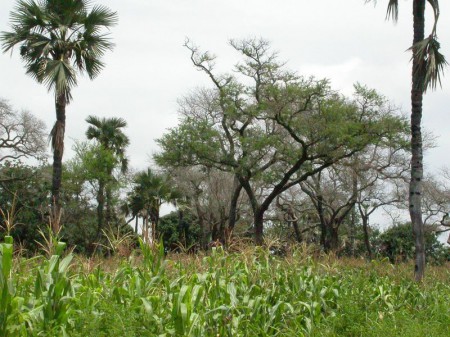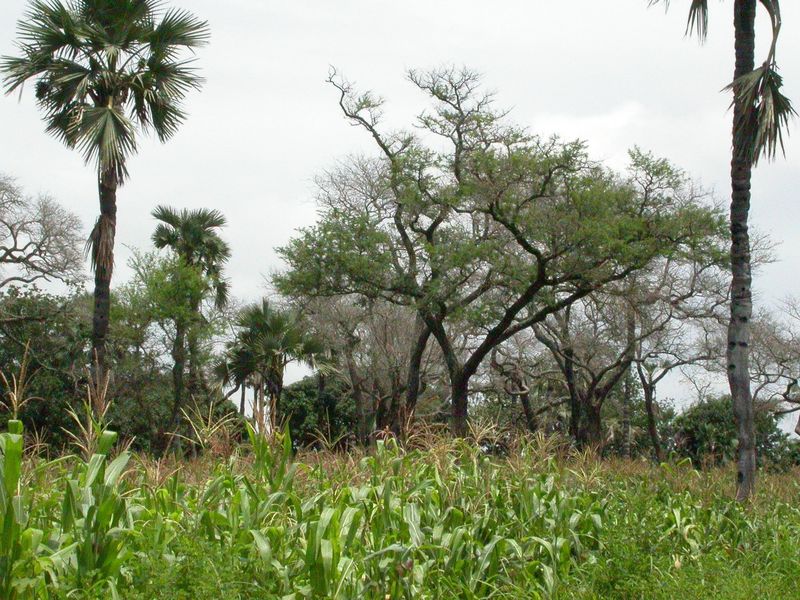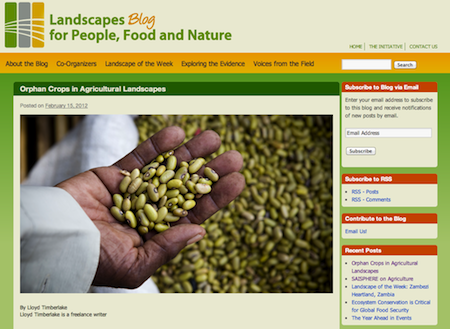Good news from Landscapes for People, Food and Nature. Orphan crops in Agricultural Landscapes, a recent post, tells us why the Green Revolution never took off in Africa (too diverse) and that part of the solution is that “Africa’s varied ecosystems do contain crop species very important to African farm families, if not to science”. The piece goes on to sing the praises of the African Orphan Crops consortium, which is devoting $40 million to sequence 24 species by the end of 2014. You know what we think of that. 1
There’s nothing new to be said about the AOC consortium, but one question remains. Why, in seeking to illustrate orphan crops, does LPFN illustrate its piece with a photo of a hand holding what is clearly Phaseolus vulgaris, a species that is beloved of science, small farmers and consumers in the Great Lakes area of Africa and beyond? 2 We asked the photographer, but he is on assignment. However, our sources in the Nairobi markets confidently identified these, and said that the big yellow ones are known as Ugandan beans. Which is nice, because the actual caption with the photo says that it shows “Constantine Kusebahasa at the market, Rwenzori Mountains, Uganda”. Maybe he’s an orphan.

Oh look! A photo of Faidherbia albida, darling of the AOC consortium, in a landscape, and free to use, found in the Wikimedia Commons.

